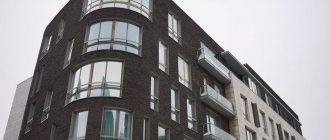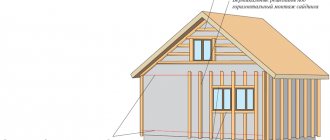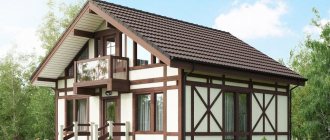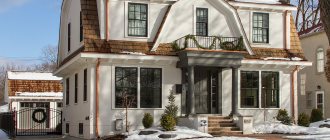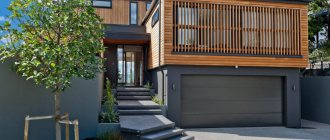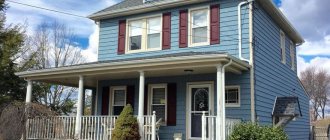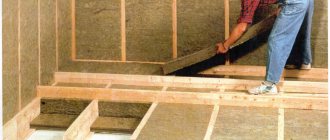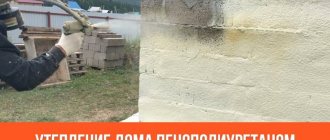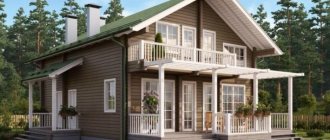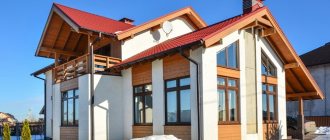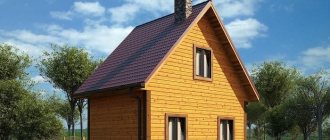The facade is the calling card of the house, one might say its face. The appearance of any structure, its durability and practicality mainly depend on how correctly the building material for cladding the house is chosen. Finishing the facade with wood yourself is one of the most popular cladding methods.
Currently existing methods of wood processing provide the opportunity to make the material fireproof and resistant to external climatic factors, as a result of which the service life of wooden facades becomes very long. These environmentally friendly structures are a huge field for the flight of design ideas. Cladding facades with wood is usually typical for residential country houses or for the construction of respectable hotels and restaurants.
Advantages and properties of wood cladding
If you choose wood as a façade finish, you definitely won’t go wrong. The façade, lined with wood, is stylish, respectable and elegant. Wooden facades have a number of undeniable advantages, among which the following are worth noting:
- environmentally friendly material,
- moisture resistance and durability,
- installation of wooden facades can be carried out at any time of the year,
- fire resistance of the material,
- prestigious appearance of the house,
- easy replacement of damaged structural elements.
Wood can withstand harsh and mild climates.
Wooden facade structures are equipped with heat and sound insulators, which can significantly improve the operational and energy-saving performance of the house.
This way, you can save on energy resources during the cold season. Thanks to wooden cladding, the window and corner joints of the house will not freeze. The tree has high resistance to both low and high temperatures. Thanks to this, wooden cladding of the house can be installed in absolutely any climatic conditions.
Proper care is the key to the durability of a wooden facade
Since the wooden facade is susceptible to exposure to sunlight , high humidity and other atmospheric phenomena, it is necessary to take a number of care measures after its installation. Previously, oil paint was used for this, which was used to cover the wood every 1-2 years. However, after several layers, the noble wood looked more like plastic.
The modern market of paints and varnishes makes it possible to make wood care more reliable without spoiling its original appearance. There are two most effective ways to do this:
- Using façade varnish . When varnish is applied to wood, a protective layer is formed, which favorably emphasizes the appearance of the wood. It is applied quite easily, and therefore the procedure can be carried out without the involvement of specialists.
- Azure coating. This coating can protect wood for a period of 3-7 years, depending on what components are included in its composition. At the same time, azure is able to preserve the wood texture, favorably emphasizing its beauty with a variety of tint colors.
Wooden facades do not lose their leading position after many years. This is due to their incomparable advantages over other options. At the same time, the materials market is regularly growing and is replenished with new types of finishing based on these natural raw materials.
Choosing durable material
To clad the façade with wood, a variety of solid wood varieties can be used. Experts recommend using local types of wood. They explain this by the fact that such materials will make it possible to predict the expected service life. Because their behavior in the local climate is known, as well as what is best to treat them with in order to protect them from pests and rot. And the price of domestic material is much lower than its exotic counterpart.
- Spruce and pine are the most common building materials. It is easy to handle and the cost of these two breeds is much lower than the others. Pine and spruce are resistant to stress. The high resin content makes the wood of this species very durable. An array of mountain pine species has the best properties. Pine and spruce do not crack.
- Larch is incredibly durable, easy to dry and process. Larch is distinguished by its unusual yellow-red hue of wood. Despite the centuries that have passed since construction, many houses and churches that were made from larch wood have survived. Over time, larch becomes silver-gray or brown-black. It is worth noting that the most popular material for façade cladding is larch plank.
Selection of material
Siberian cedar and ash are also popular.
Exotic species with high performance indicators, including merbau, teak and iroko, are suitable for finishing a luxury home.
Wood siding
Wood siding is made from wood fibers that are compressed under high temperatures and pressure. Polymers are also added to it to bind and give the products high decorative qualities, emphasizing the volume of the design. Polymers prevent wood from absorbing moisture. Facades must be fire-resistant, and it is siding that meets these requirements.
Note! Siding is very easy to install on all surfaces from wood to brick. Siding panels do not cause harm to health. They are considered one of the best materials for cladding.
This product has an attractive appearance and dense structure. On the front side of the siding there is an embossed pattern that imitates wood fibers.
Video description
About log siding in the following video:
Fiber cement
Despite the fact that fiber cement panels with wood texture appeared on the construction market relatively recently, they have already been appreciated - both by users for their good performance characteristics and by installers for the ease of working with this material. Since, in addition to the quality of the material, one of the most important criteria for its selection is service support, in order to reveal the full range of advantages, we will consider fiber cement facade panels of the Cedral brand.
Fiber cement siding has received well-deserved positive reviews from customers, thanks to its following positive qualities:
- Environmental friendliness
When fiber cement was first invented, asbestos was one of its main components. But its use was abandoned in 1976 because researchers were concerned that asbestos dust was harmful to health. Today, in the production of fiber cement siding, cement, sand, water and natural reinforcing fibers from cellulose are used, that is, fiber cement has become completely natural.
Eco-friendly fiber cement panels are even used for terraces and gazebos Source cedral.world
Block house finishing
Block house
A high-strength finishing material that allows you to maintain the integrity of the skin and resist mechanical damage is called a block house. The appearance of this cladding can be easily restored if it has been damaged. This can be done by using sandpaper and then painting the surface in the desired color.
Block house cladding
Finishing a facade with wood is a simple matter, and therefore does not require any initial knowledge and skills. Thus, you can effectively protect your home, insulate it and give it an aesthetically attractive appearance.
Note! All wooden facades require some maintenance. Here, perhaps, a lot depends on the quality of the coating. It must be painted or coated with protective materials, such as varnish, from time to time.
Facade installation
The quality of the result and service life depend on the correct installation of the structure. All work must be carried out on a previously prepared surface. So the facade must be leveled and completely cleaned of dirt and grease.
The installation itself involves the organization of two battens. The purpose of the first is to hold the insulation layer, and the second is to hold the facing material. For the first layer, a lathing with sections of 10 * 5 cm is well suited, for the second - 3 * 4 cm. The technology for finishing the facade with wood will differ, depending on the material used. But in general there are common features.
Figure 4. Installation of a wooden facade.
So all measurements should be carried out only with the help of appropriate tools, and not rely on your eye. Twine and beacons work well to draw parallels. It is better to start installation from the bottom, going up.
General installation rules
Work to protect the walls and facade of the building must be carried out in strict compliance with safety rules, as well as taking into account the following nuances:
- For wooden houses with a cross section of 15*15 cm, it is necessary to organize additional insulation.
- When using mineral wool as a thermal insulation material, secure it to a thickness of 10 cm using dowels.
- To better attach the thermal insulation to the walls of the house, you should organize lathing.
- To obtain air space, it is necessary to leave 5 cm between the thermal insulation material and the sheathing.
- A layer should be laid on top of the thermal insulation to protect against moisture penetration.
- The next step after waterproofing is attaching a polyethylene oilcloth to protect the walls from the wind.
- already attached to the facade .
Ventilated facade
The technology for creating a ventilated facade begins with its markings. It is along this that the brackets will be attached using anchors. To ensure that the fasteners do not corrode, experienced specialists, after installing the anchors, paint over their caps.
Also, with the help of anchors, the insulating layer is fixed to the facade. external influences can be chosen as thermal insulation . Next, the insulation is followed by the installation of a moisture and windproof layer, which will protect the building from high humidity and air currents.
Figure 5. Structure of a ventilated facade.
The final stage is the installation of the selected finishing material made of wood, coated with varnish or other protective layer. Installation is carried out on the finished sheathing using fasteners.
Lining as a facing material
Lining
The most famous and affordable material for facade cladding is lining. It is a solid board that serves as both protection and beautiful home decor. Lining is classified into classes A, B, C. It all depends on the purity of the wood, on the presence of darkening and knots on it. If the lining is produced in accordance with European standards, then it is already called eurolining. According to quality, eurolining is divided into three classes: Extra, Classic and Economy. The main advantage of the lining is its low weight. Thus, the load on the foundation, as well as load-bearing walls, is minimized.
It is worth noting that the lining can be placed on the frame in both horizontal and vertical positions. During the construction of the façade cladding frame, it is very important to leave an intermediate space between the wall of the house and the decorative cladding. This way, you can prevent the appearance of dampness and rotting of wooden elements.
The lining or eurolining with which you will cover the frame structure must be impregnated with an antiseptic composition intended for this purpose and with anti-rotting agents. To retain heat in the house, when finishing the facade, insulate the entire building.
Main manufacturing companies
Manufacturers of hanging panels for exterior home decoration try to ensure that their products meet all standards for quality, environmental friendliness, and durability. It is based on quality indicators that companies gain popularity in the market.
The main manufacturers of panels are:
- Docke is a Russian company with German production technology and equipment;
- Neva-Steel is a St. Petersburg company. It is expanding quite quickly and has good ratings among competitors;
- Vox is a Belarusian manufacturer. Produces high-quality panels;
- Holzplast is a Russian-German company that has good quality materials and produces a line of wood-look materials;
- Alfa-Profile is a Russian manufacturer. Produces competitive materials.
Innovative approach! Planken
Planken installation
A multifunctional profile made of wood is called a façade board or plank. It is made from hardwood. The profile can be curly, flat, or round. This building material was developed specifically for decorative cladding on the outside of a house. It is worth noting that planken has a very long service life and is much more practical than lining.
Note! During the installation of the plank, the boards are mounted with a certain distance, and not in a tenon! Thus, if the structure swells, it will not lose stability, and if necessary, one of the boards can be easily replaced.
Ventilated facade
This type of installation makes it possible to provide additional ventilation to the wooden façade. And this, in turn, only extends the service life of the structure.
Requirements
To ensure that dampness does not form in the dacha house, that it is always comfortable, warm and cozy, and that the outside of the building looks aesthetically pleasing, it is necessary to select facing materials that meet a number of basic requirements.
- The cladding must necessarily have a low thermal conductivity. This is the only way to retain heat in the interior of the building.
- The cladding must be vapor permeable. In no case should condensation appear in the inner part of the insulating layers.
- Moisture resistance is another important parameter that should relate to cladding. The material should not absorb moisture into its structure and retain it there.
- The heat resistance of the cladding is either increased or absolute. Materials must be able to easily withstand exposure to elevated temperatures: not melt, not ignite, not deform.
- It is advisable to choose a lining that is inert to chemical influences. It should not change its original properties when such substances come into contact with it.
- The cladding must be properly protected from the harmful effects of various microorganisms. It should not be a favorable environment for parasites, insects or rodents.
- The sheathing material must not decompose or suffer loss of physical properties when exposed to aggressive ultraviolet rays.
In order for the cladding to be effective in all respects, it must not only be secured as securely as possible to the base, but also supplemented with a whole set of layers, each of which will perform its own specific functions.
Imitation of timber
The finishing material, imitating timber, looks like a planed board. It is sold at reasonable prices, thanks to which the material has taken a leading position in sales. The raw materials for the production of artificial timber are mainly deciduous trees such as linden, aspen, cedar and birch. In some cases, conifers such as spruce and pine are also used.
Houses made of timber on a turn-key basis and for shrinkage, see projects and prices here.

